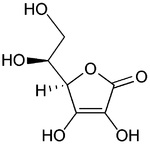Hot off the press, this meta-analysis suggests the benefits of using vitamin C in the prevention and treatment of pneumonia. Although not a slam-dunk, vitamin C seemed to have a positive effect in different age populations in preventing the incidence of pneumonia and treating people with pneumonia.
Vitamin C is a bit of an odd vitamin because it seems to be so essential to our health however as humans we have lost, or never acquired, the capability to make vitamin C like other mammals. Wouldn’t it be nice if every time you ate too much sugar, your body could just convert the sugar into vitamin C to help the body combat stress and infection? Amazingly, this is what other mammals can do!
For us humans, Vitamin C can be found in many foods. Most notably, in peppers and cruciferous veggies, such as kale, broccoli and Brussels sprouts. Pack these guys in before winter to optimize your immune function!
The following was sent from Evidence Updates – British Medical Journal Evidence Centre
BACKGROUND: Pneumonia is one of the most common serious infections, causing two million deaths annually among young children in low-income countries. In high-income countries pneumonia is most significantly a problem of the elderly.
OBJECTIVES: To assess the prophylactic and therapeutic effects of vitamin C on pneumonia. SEARCH
METHODS: We searched CENTRAL 2013, Issue 3, MEDLINE (1950 to March week 4, 2013), EMBASE (1974 to April 2013) and Web of Science (1955 to April 2013).
SELECTION CRITERIA: To assess the therapeutic effects of vitamin C, we selected placebo-controlled trials. To assess prophylactic effects, we selected controlled trials with or without a placebo.
DATA COLLECTION AND ANALYSIS: Two review authors independently read the trial reports and extracted data.
MAIN RESULTS: We identified three prophylactic trials which recorded 37 cases of community-acquired pneumonia in 2335 people. Only one was satisfactorily randomised, double-blind and placebo-controlled. Two trials examined military recruits and the third studied boys from “lower wage-earning classes“ attending a boarding school in the UK during World War II. Each of these three trials found a statistically significant (80% or greater) reduction in pneumonia incidence in the vitamin C group. We identified two therapeutic trials involving 197 community-acquired pneumonia patients. Only one was satisfactorily randomised, double-blind and placebo-controlled. That trial studied elderly patients in the UK and found lower mortality and reduced severity in the vitamin C group; however, the benefit was restricted to the most ill patients. The other therapeutic trial studied adults with a wide age range in the former Soviet Union and found a dose-dependent reduction in the duration of pneumonia with two vitamin C doses. We identified one prophylactic trial recording 13 cases of hospital-acquired pneumonia in 37 severely burned patients; one-day administration of vitamin C had no effect on pneumonia incidence. The identified studies are clinically heterogeneous which limits their comparability. The included studies did not find adverse effects of vitamin C.
AUTHORS’ CONCLUSIONS: The prophylactic use of vitamin C to prevent pneumonia should be further investigated in populations who have a high incidence of pneumonia, especially if dietary vitamin C intake is low. Similarly, the therapeutic effects of vitamin C should be studied, especially in patients with low plasma vitamin C levels. The current evidence is too weak to advocate prophylactic use of vitamin C to prevent pneumonia in the general population. Nevertheless, therapeutic vitamin C supplementation may be reasonable for pneumonia patients who have low vitamin C plasma levels because its cost and risks are low.
Hemila H, Louhiala P. Vitamin C for preventing and treating pneumonia. Cochrane Database Syst Rev. 2013 Aug 8;8:CD005532.(Review) PMID: 23925826
